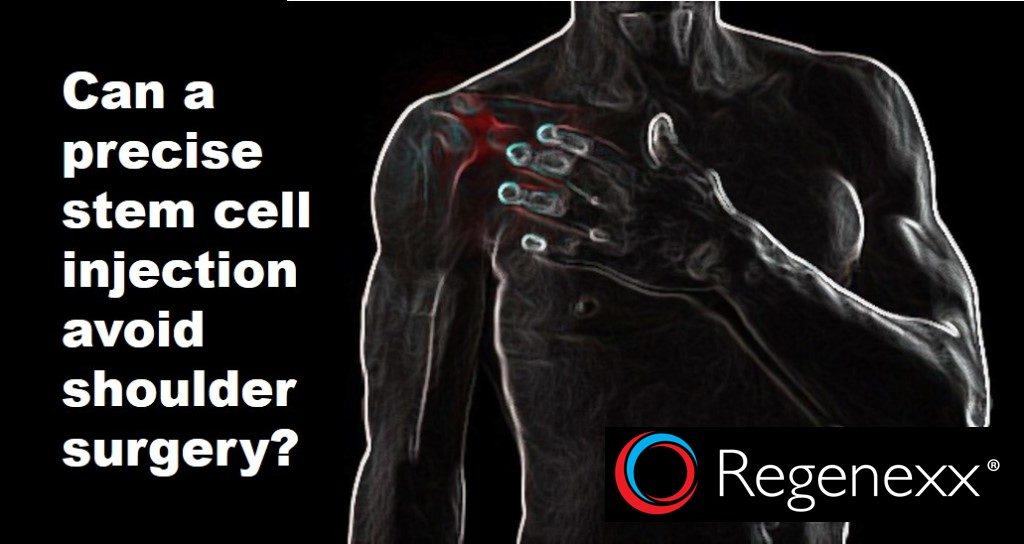Shoulder Stem Cell Repair? A Weightlifter’s Journey…
Todd is a middle aged man who tore his rotator cuff when lifting weights and was told he needed surgery to repair the tear. Todd chose to avoid the knife and instead got his own stem cells precisely injected into the tear using sophisticated imaging guidance. Now that he’s a year out from those shots, let’s see if this was truly a shoulder stem cell repair.
The rotator cuff is a collection of muscles and tendons around the ball of the shoulder ball and socket joint. They help to control the motion of the joint and finely adjust the stability. Tears are common in middle aged people and often result in surgery to repair the tear. However, recent research has questioned the effectiveness of the surgery to treat shoulder rotator cuff tears. As a result, newer interventional orthopedic approaches using precise injections of platelets or stem cells into the tear have emerged as less invasive alternatives.
Todd injured his shoulder when he lost control of a heavy weight. The ultrasound of his shoulder demonstrated multiple partial thickness tears and large chunks of bone that had been damaged throughout the years (cortical irregularities). In April of 2014, I injected his own bone marrow stem cells precisely into the torn areas using ultrasound to guide the injection. He had one PRP “booster shot” at around 3 months after the stem cell injection. I’ve seen him multiple times over the last year plus and as of August 2015, reports that his shoulder is 100% improved with no pain or functional limitations. The rotator cuff tendon also looks markedly improved with ultrasound imaging.
The upshot? Todd seems to have successfully dodged the surgeon’s knife. He’s thrilled and now back to pumping iron without any issues. Most importantly, Todd never experienced the protracted down time and long rehab of a traditional rotator cuff surgery, where the patient wears the dreaded pillow immobilizer and has to dramatically limit activities. Instead, he just listened to his body and laid off what hurt while his shoulder healed!

NOTE: This blog post provides general information to help the reader better understand regenerative medicine, musculoskeletal health, and related subjects. All content provided in this blog, website, or any linked materials, including text, graphics, images, patient profiles, outcomes, and information, are not intended and should not be considered or used as a substitute for medical advice, diagnosis, or treatment. Please always consult with a professional and certified healthcare provider to discuss if a treatment is right for you.

